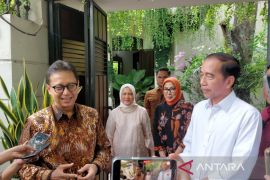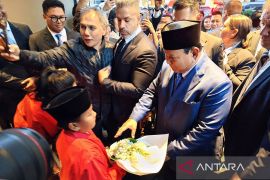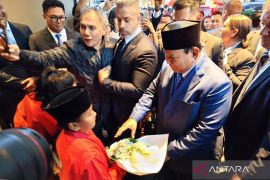However, even though it is more of a myth than reality, the fact is that many people still consider goat meat as something that leads to high blood pressure and increased cholesterol in the body.
Many doctors have clarified that consuming lamb or goat meat is not the main cause of hypertension as understood by certain quarters. Goat meat has high saturated fat content yet the unsaturated fat is even higher.
It should also be noted that the saturated fat in goat meat is less than that found in beef or lamb. So, one should not avoid consuming goat satay if one consumes beef. As long as it is consumed in reasonable amounts, it would not cause high blood pressure or increase cholesterol level. It is just the same as consuming beef, according to a doctor.
A goat breeder, during the 2016 Livestock Service Month attended by President Joko Widodo (Jokowi) in Bogor, West Java, on Wednesday, asked the government to clear the misconception and stop blaming goat meat as a cause of hypertension.
The breeder, who had come from Batu City in East Java, was attending a dialogue with the president on the development of goat and sheep breeding at home. On the occasion, the Ministry of Agriculture also organized a sheep contest to enliven the livestock service month.
During the dialogue, President Jokowi expressed the hope that people would not only look for beef and that sheep and goat would also become sources of alternative animal protein.
The president also reiterated that goat meat did not boost blood pressure or cholesterol level. "I often consume goat satay, but my cholesterol level remains low, unless I consume the innards," he shared.
Jokowi supported the development of sheep and goat breeding as part of the efforts to meet peoples need for animal proteins. "Sheep and goats can breed fast and provide alternative meat to meet peoples need for animal protein," he underlined at the Bogor Presidential Palace on Saturday.
Consumers at home still focus on beef, and a shift to sheep and goat will help increase intake of alternative animal protein, Jokowi suggested.
Sheep and goat breeding need not take up too much land like a cattle ranch, he added. Sheep or goat meat also contains 27 percent proteins while cow meat only contains 24 percent.
In order to encourage sheep breeding, the government is organizing an annual sheep contest and a chance to win a President Cup in the coming contests to be held in October or November.
Jokowi promised to organize a sheep contest in the form of a President Cup at the end of the year in an effort to encourage sheep and goat breeding. "I have ordered the agriculture minister to prepare for a President Cup competition in October or November," Jokowi informed during the dialogue.
President Jokowi also promised that the contest will offer a big prize. He will set aside Rp1 billion for the contest development.
The Ministry of Agriculture organized the sheep and goat contest on Saturday in Bogor as part of the 2016 Livestock Service.
A total of 875 heads of sheep and goats took part in the contest in which quality sheep and goats were to be selected. The event also rouses the pride of breeders.
The agriculture ministry has been paying serious attention to the quality of sheep and goat whose population has increased by 5.8 percent from 2011 to 2015.
In 2015, the population of sheep and goats had reached 36 million. They are bred on a (small) home-scale (less than 10 each) across the country. Breeders in West Java, Central Java and East Java, dominate sheep farming in the country.
Sheep breeding has developed well in the country as reflected in the number of sheep and goats, 17 million and 19 million, respectively. "Hopefully, we will export these (sheep/goats) next year," the minister noted.
It is forecast that the population of sheep and goats in the coming five years will increase.
The FAO-OECD Agriculture Outlook 2015-2015 has forecast that the annual local meat consumption will increase to 35.3 kilogram per capita per year from 1.3 kg per capita per year in 2015.
Although sheep and goat meat is not popularly traded globally, this commodity has a promising global market segment to meet certain needs such as the demand during religious rituals in Asia, Africa and the Pacific.(*)
Reporter: Andi Abdussalam
Editor: Heru Purwanto
Copyright © ANTARA 2016










